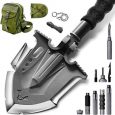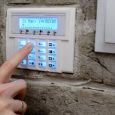 Did you know that the cost of solar has dropped over 70% in the last ten years? It’s no wonder that solar energy across the United States is growing at an exponential rate.
Did you know that the cost of solar has dropped over 70% in the last ten years? It’s no wonder that solar energy across the United States is growing at an exponential rate.
Nationwide solar energy has the capacity to power 18.9 million homes. Solar is the most available and cleanest source of renewable energy right now.
While this is exciting news, you may also be wondering: how do solar panels work?
Keep reading to learn more about solar panel technology and the science behind its booming popularity.
What Exactly is Solar Energy
Solar energy is light and heat that’s emitted from the sun. Humans and plants harvest this energy in a number of different ways. For example, plants capture solar energy through photosynthesis to grow, create oxygen, and store carbon.
At its most basic level, solar panel technology converts sunlight into electrical energy.
This technology captures sunlight through photovoltaic panels or mirrors that concentrate solar radiation. Once converted, this energy is used as electricity to power lights, homes, and vehicles.
How Do Solar Panels Work
More and more homeowners across the country are installing solar panels and considering solar as a viable source of energy. The science behind how sunlight becomes electricity to power a house comes down to a few key steps:
- Creation: Types of solar panels are created with silicon, which is a great semiconductor for producing electricity
- Capture: Sunlight hits the silicon panel and creates an electric field through the “photovoltaic effect”
- Conversion: A solar inverter is used to transform the electricity from DC to AC
- Power: A wire transports the AC electricity from the inverted to a breaker box (also called an electric panel)
- Distribution: The breaker box distributes the electricity throughout the house
Once converted into AC electricity, solar energy can be used to power everything in your home from the hot water heater to the refrigerator. Learn more about what factors to consider before changing your house to solar power.
Storing New Electricity
There are a lot of advantages to connecting your solar panels to the utility grid. A grid-tied system allows you to use and sell your solar electricity. Depending on the size of the system, solar panels have the ability to produce more energy than you will actually use. As electricity flows back to the utility company, the meter runs backward and you receive credit for the extra energy generated.
On the other hand, if you live in a location with less sun or have a string of cloudy days, a grid-tied system will let you use supplemental electricity if you can’t produce enough energy to meet the demand.
Simple Tech Behind Solar Power
The simple science behind solar panels is also what makes them a popular and exciting new technology for renewable energy. Next time a friend or family member asks, you should be able to answer the question: how do solar panels work?
To stay ahead of the curve, check out our blog to stay up-to-date on new technology and popular trends.




